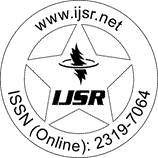Downloads: 80 | Views: 246
Research Proposals or Synopsis | Medical Science | Indonesia | Volume 9 Issue 11, November 2020 | Rating: 6.8 / 10
Analog Rice from Arrowroot (Maranta arundinacea L.) and Hibiscus rosa sinensis L. as a Low GI Dietary in the Mice Model of Diabetes Melitus (DM)
Antari Arlita Leniseptaria | Indah Saraswati | Eva Annisaa | Astika Widy Utomo | David Pakaya
Abstract: Background: Irregular diet may triggers diabetes mellitus (DM), so it needs controlled by consuming a balanced and fiber-rich diet. Arrowroot (Maranta arundinacea L. ) is a local food plant source of fiber-rich carbohydrates with a low glycemic index (GI) which is considered appropriate for this purpose. Hibiscus rosa sinensis L. has been shown to reduce blood glucose levels and suppress hyperglycemia conditions that cause inflammation. Aims: To evaluate the effect of giving analog rice from arrowroot and H. rosa sinensis L. to the DM mice model. Methods: Analog rice was tested for toxicity on male Rattus novergicus Sprague Dawley strain that had DM made through intraperitoneal induction of NA and STZ solutions and evaluated blood sugar levels. DM sugar content ≥ 250 mg/dL (7, 8 mmol/L). Feeding as much as 10 % body weight (BW), ad libitum every day for 2 months, terminated, and histopathologically observed organs. Results: Giving analog rice reduced the overall weight of the group (mean = 20, 86 grams) and GDA in 10 groups, except for K1 (normal control of regular rice) and P1 (DM of regular rice). The largest decrease in body weight and GDA was in the P2c group (DM analog rice 400mg/kgBW), pre test = 172 ± 12, 19 grams; post test = 134, 86 ± 17, 04 grams; pre test = 390, 86 ± 30, 86mg/dL; post test = 237, 57 ± 90.07mg/dL. Data analysis showed that there was a significant difference between BW and GDA (p = 0.012 and p = 0.00). Conclusion: The administration of analog rice reduces BW and GDA, with the greatest reduction effect at 400mg/kgBW, does not show a spectrum of toxic effects and does not cause cellular organ damage. The results of the meaning of the toxicity are slightly toxic; LD50 = 2.233, 1mg/kgBW (interval 1.765, 8-2700, 4mg/kgBW).
Keywords: analog rice, arrowroot, H rosa sinensis L, diet, toxic, LD50
Edition: Volume 9 Issue 11, November 2020,
Pages: 740 - 746
